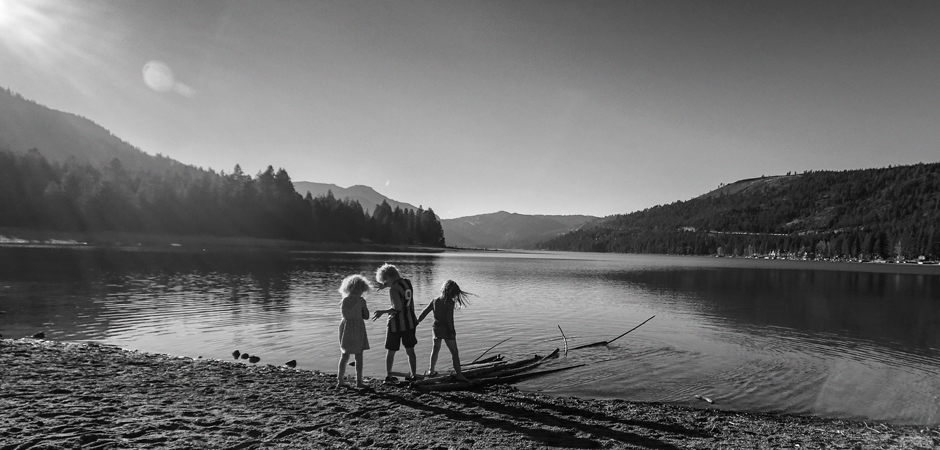Tips + Techniques
It’s summer and like most people, you are probably trying to squeeze in a little vacation time. Of course, wedding photographers are (hopefully) booked for most of the summer, but September and October usually offer a respite from the crazy wedding season. And unless you’re a landscape and nature photographer, do you really want to bring along your camera, lenses, lights and other paraphernalia on your “off time”? C’mon, admit it— you use your phone to take the images to create those memories. You go to a family reunion and pull out your phone when your grandfather gives a speech or Aunt Bessie is trying to use the hula hoop to show that she’s still in shape.
So let’s dive deeper into mobile photography (or phoneography, as it has been called). I know some might still think of it as a taboo subject in a professional photo magazine, but we must acknowledge that the camera in your phone has become more and more sophisticated. Are phones a threat to the professional world? I don’t think so, unless the bride and groom think that collecting mobile images from guests instead of hiring a professional is a good idea (and it’s not!). But more and more, there are photographers out there starting to use their phones as a supplemental tool at weddings.
According to statista.com, there will be 265.8 million cell phones in the U.S. by the end of 2019. And worldwide, the projected number is 4.68 billion. When you consider there are almost 8 billion people living on this planet and over half of them own a cell phone, well, that’s a staggering statistic.
When DSLRs first came out, everyone thought that those cameras would never catch on. But it became apparent that the new technology was going to allow photographers more freedom than their film cameras did. The same is true for phone cameras. Are they replacing DSLRs and mirrorless cameras? No—it’s just a different way of capturing memories and telling your stories. Lisa Carney, a Hollywood retoucher and a mobile photography instructor (and a judge for the WPPI Print, Album and Filmmaking Competition) has a pragmatic approach to mobile photography: “You are still using the same skills that you need when shooting with your DSLR or mirrorless camera. Composition, lighting and posing must be considered when capturing a mobile image.” Carney likes to remind her students that, as celebrity chef Duff Goldman says, “It’s not the wand, it’s the wizard!”
As a business tool for busy pros, a mobile phone can really help with the challenges of maintaining social media accounts. When you’re constantly trying to keep your business Instagram and Facebook accounts engaging, using a cell phone to capture behind-the-scenes images as you’re setting up for wedding or family shoots can really help your audience become part of your experience. Live-streaming on your phone is easy and spontaneous. As I mentioned in my article last month, social media is an important part of maintaining a competitive photography business, and your phone is always in your pocket or purse.
Your phone can also be useful when used for short audio or video purposes. Does your client have something nice to say about your work? Use video mode to capture and post it on your website; if the client doesn’t want to be on camera, just record the video and transcribe it to use for marketing purposes.
There are many tools that you can use to edit your images on your phone. Lightroom®CC for Mobile allows you to capture your images while in Lightroom and edit them at the same time. There’s even a free version that you can use, but it does have limited storage. There are other apps like Photoshop®Express, Snapseed, VSCO Cam and Carbon (for black-and-white photos) that make mobile editing easy, allowing you to be creative on the go. It’s easy to tuck a few compact lenses into your pocket that can be used while you’re traveling, including ones by Moment and Olloclip (who has recently hired the world-famous travel and adventure photographer Chris Burkard to endorse their lenses).
Phones are getting smarter and you can incorporate their small but mighty cameras into your life, both for business and pleasure. They will never replace the professional camera—both can co-exist in this tech-savvy world. As the master Henri Cartier-Bresson’s once said, “We must avoid, however, snapping away quickly and without thought, overloading ourselves with unnecessary images that clutter our memory and diminish the clarity of the whole.”
So, pull out your phone, take a few images, and tuck it back into your pocket. Then open your camera bag to capture the highest quality images that you can with your “real” camera.
Arlene Evans is the WPPI conference producer. Previously, she was head of the photography channel at CreativeLive and before that, the director of WPPI. Email her your feedback or topics you want addressed at arlene.evans@emeraldexpo.com.
Related: How to Find Balance With Social Media When You Own a Business
8 Easy Ways Photographers Can Create Engaging Video Content
Canon Courts Vloggers with New PowerShots





